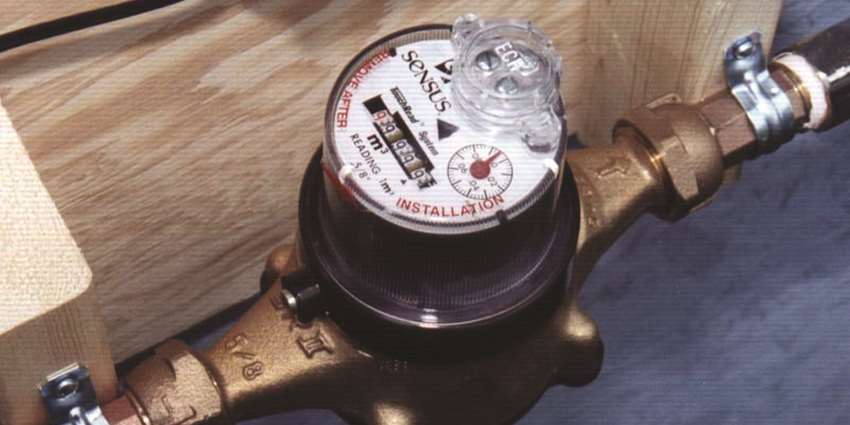If people knew it cost around $20 extra at the end of the month to leave their water hose on overnight, they might be more conscious about making sure it’s off. At least that’s the idea that Texas A&M AgriLife Research, Texas A&M AgriLife Extension Service and Texas A&M Engineering Experiment Station are testing in their automated metering infrastructure project (AMI), according to Joel Andrus, AgriLife Extension associate with the Texas Water Resources Institute.
From a consumer’s perspective, Andrus said the project will make managing utility bills more tangible. From a utility company’s view, it will provide a way to locate leaks, and thus save money. In both cases, the awareness between the two groups — industry and individuals — will ideally provide the information necessary to conserve water.
With the 2012 Texas state water plan forecasting that municipal water demands will have the fastest growth among all demand categories and predicting those demands to be greater than all categories in 2060, the Texas Legislature charged the A&M agencies to research new technology that addresses the future water needs of Texas.
Through the AMI technology, household water usage information can be wirelessly transmitted to the water provider, which to date in this project is the city of Arlington. Citizens volunteer to be a part of the AMI study. Then, daily updates on the website inform the consumers about the quantity of water used and the associated costs. After mailing participation inserts with utility bills and sending emails, around 1,000 people in Arlington are currently signed up to receive updates via the website, and more are anticipated to participate, Andrus said.
“What automated water meters in conjunction with the website help you understand is for a particular hour in a day — say you use 150 gallons at 7 a.m. — if you know that all the water you used was to shower, you become much more aware of what that shower actually costs in terms of water usage,” Andrus said.
Other attributes of the website include setting water use limits and email notifications for potential leaks. Users can set usage limits that if exceeded will trigger an email to the user informing them that they’ve used more than they wanted. This will help them not only save water but also help them manage their water bill, he said.
The website also provides helpful tips that raise awareness regarding water usage. For example, a helpful notice on the website informs consumers that watering a lawn for two hours a day uses water at a rate of 10 gallons a minute. At the end of the month, the result is 36,000 gallons of water used for a total of $145.36 added to the water bill.
“From the utility perspective,” Andrus said, “conservation can mean revenue loss.” However, AMI technology allows utilities to manage leaks and non-revenue water loss in a way that offsets the revenue lost from conservation.
For example, a utility company may produce a million gallons of water, but what is delivered to the customers is only 900,000 gallons. Despite the fact that the 100,000 gallons are unaccounted for, the utility still has to cover those costs. Automated meters not only can help utilities track those losses and locate areas with potential leaks and damages, but can significantly reduce the amount of bill adjustments the utility gives to consumers who experience an unanticipated high water bill, he said.
The project is currently focusing on Arlington to ensure that the process has as few flaws as possible before expanding the project to other cities. Round Rock is anticipated to join the project within the next few weeks.
Andrus said the project’s goal is that in a couple of months, participants’ water usage will decrease 5-20 percent.
Once the data is collected, the institute is going to interview conservation officers regarding their conservation programs and the utilities about their experiences with AMI. The lessons learned from this project will be published in several extension guidebooks that water systems can use to better understand how to implement and use AMI and conservation programs, he said.

